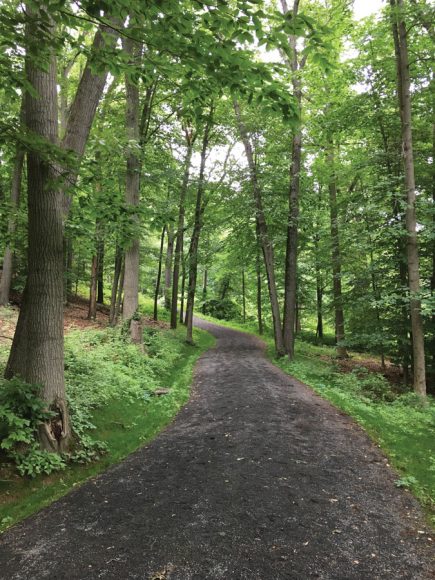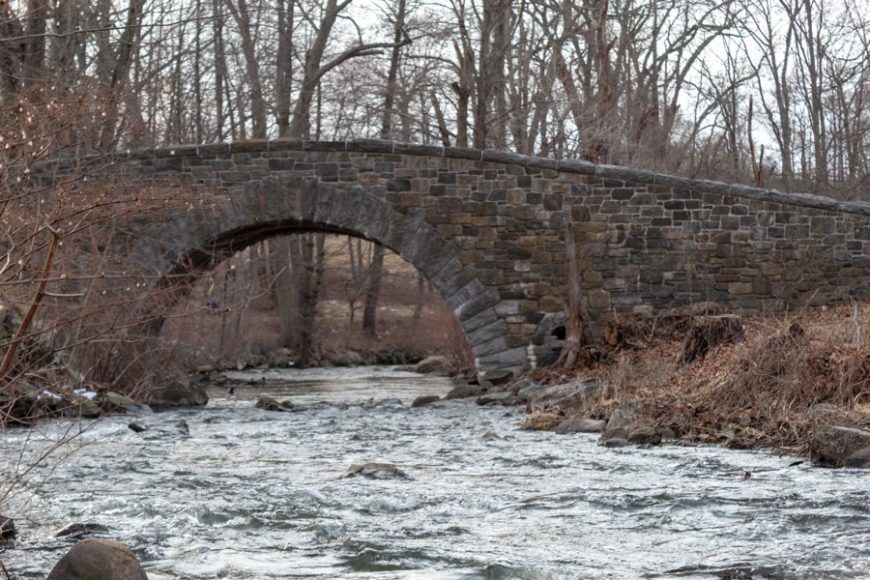The 65 miles of carriage trails along Rockefeller State Park Preserve in Pocantico Hills wind through meadows, across streams and up hills with views of the Hudson River. George Gumina — founder of the Friends of Rockefeller State Park Preserve and a son-in-law of former Vice President and New York Gov. Nelson A. Rockefeller, John D. Jr.’s second son — calls it Westchester’s Central Park, though Rockefeller park’s 1,600 acres are double the size of the Manhattan park.
Thanks in large part to the efforts of the group Gumina founded more than two decades ago, the carriage trails will soon be recognized on the state and national Historic Register of Places. The 16-foot-wide, crushed stone pathways that guide park visitors were officially nominated in December to join the New York Register of Historic Places, which typically fast tracks a property for a place on the national register.
The park’s trails, visited by 350,000 people each year, were designed by John D. Rockefeller Sr. and Jr. over a 40-year stretch from 1910 into the 1950s. The Rockefellers arrived in Westchester in the late 19th century, when John D. Sr. used part of his Standard Oil fortune to buy land on the Hudson River in Pocantico Hills, which became the family home, Kykuit, now a historic landmark. The Rockefellers gradually acquired more than 3,000 acres for their estate.
Much of that land has since been donated to the state park, including a recent addition of 346 acres, earlier this year, from the estate of David Rockefeller, the billionaire banker and philanthropist who was John D. Jr.’s youngest child.
The carriage trail network traverses the park, distinct for its series of stone arch bridges. The same style of bridges guides hikers, cyclists and horseback riders in Acadia National Park in coastal Maine, which was also designed by John D. Rockefeller Jr. and carries a state and federal historic designation.
“These roads are to me, and to many, a state landmark,” Gumina says of the Pocantico trail, adding that the landscaping and bridges make the trails “a work of art.”
“And this has been open to the public since day one for everyone to enjoy,” he says.
Still, it’s not easy for an actual trail network to become registered as a historic place, a title more often reserved for buildings and neighborhoods. The Friends of Rockefeller led a lobbying effort to register the trails that included support from Westchester County Executive George Latimer and Congresswoman Nita Lowey.
Rose Harvey, commissioner of the state Office of Parks, Recreation and Historic Preservation, said Rockefeller’s historic designation “honors the conservation ethic and philanthropy that made the Rockefeller family among America’s greatest benefactors of public parkland.”
The designation — officially the Rockefeller Pocantico Hills Estate Historic District — covers the entirety of the Rockefeller estate, including Kykuit and the Playhouse.
The Friends organization helps raise funds to assist the state in maintaining the roads. The next big lift for the group is fundraising for maintenance on Brothers’ Path, a popular route for visitors that circles the preserve’s Swan Lake.
Gumina drives a carriage with horses throughout the park and describes Swan Lake as a personal favorite.
“It is also easy access, handicap accessible,” Gumina says. “It’s this beautiful part where you can look out on this beautiful lake.”
For more, visit friendsrock.org.





